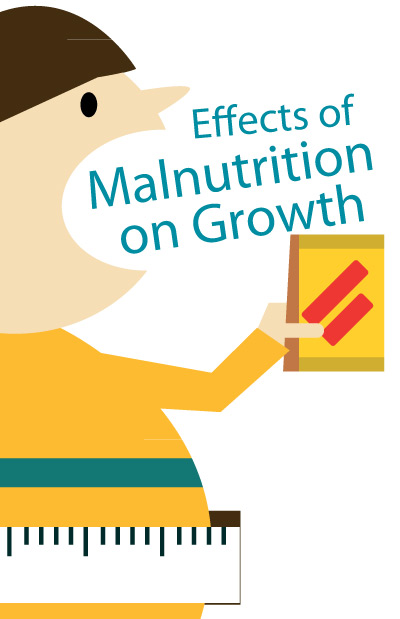When a child is not getting enough nutrition or is getting too much, he/she is described as being malnourished. Malnutrition puts children at greater risk of dying from common infections, increases the frequency and severity of such infections, and contributes to delayed recovery.
Many people confuse malnutrition as meaning ‘undernourished’ or not ‘getting enough to eat’. This is not true, since someone who has enough or too much to eat may also be malnourished or ‘overnourished’.
Aspects of malnutrition may include:
Underweight
Overweight
Stunting
Wasting
Micronutrient deficiency

Symptoms of malnutrition in children can include:
- failure to grow normally, both in terms of weight and height.
- changes in behaviour such as appearing unusually irritable, sluggish or anxious
- changes in hair and skin colour
- taking a long time to recover from infections or wounds
- poor concentration
- persistent diarrhoea
- depression
Your child’s weight and physical development can indicate whether he/she is malnourished. Therefore, they should be regularly assessed by a doctor in their first few years of life. Afterwards, you can monitor their growth yourself by measuring the body mass index (BMI) against a growth chart (see article Monitoring your Child’s Physical Growth).
Because nutrition has a lot to do with your child’s health and overall growth and development, your duty must be to provide it in adequacy. Providing a balanced variety of foods from different food groups at every meal is the best way to make sure a healthy mixture of nutrients enters your child.







Comments